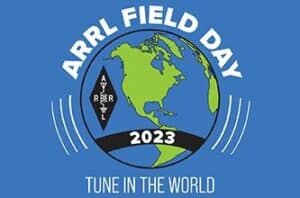International Morse Code is not a written language. It is a language of sounds. Not just two sounds, a long and a short, but there are actually five distinctly different sounds that make up the code. Learning the code’s five distinct sounds is the best way to master the code.
The first sound is: ‘dah’ This is the sound of a long key contact
The second sound is: ‘di’ This is the sound of a single short key contact that is not at the end of a letter or sequence. All the other sounds are derived from the ‘di’ sound.
The ‘di’ sound at the end of a letter or code sequence is heard as: ‘dit’. This sound is distinctly different from the ‘di’ sound when you are listening for it.
The ‘didy’ is two short key contacts and sounds like the name of an Irish children’s tune. The ‘didy’ sound is not heard at the end of a letter or sequence
The fifth and final sound is the ‘didit’. This is a double short key contact coming at the end of a letter or segment.
You must train yourself to listen for these five distinct sounds but, if you give it a try, you will find that it is easy and comes almost naturally. Once you train yourself to listen for these five distinct sounds International Morse Code becomes much easier to learn. Here is an example of why this works.
The letter ‘H’ is represented by four short key contact sounds. If you attempt to hear these as separate sounds they sound like this:
‘di di di di’
To distinguish the H from the number ‘5’ or the letter ‘S’ requires you to mentally count the ‘di’ sounds. This requires two processes. Listening and counting. It also has a tendency to put your brain into visual mode looking at visual representations of the code instead of listening for the sound of the code.
When you teach yourself to hear the five distinct sounds of the code all you have to do is listen.
H becomes ‘didy didit’
S becomes ‘didy dit’
5 becomes ‘didy didy dit’
It is much easier to hear ‘didy didy dit’ than it is to count five ‘di’ sounds. The differences between these similar characters becomes much easier to hear.
It is almost imperative that you recognize the five distinct sounds of the code, rather than count the number of longs and shorts, if you desire to gain any kind of code speed.
Below is the re-written code in the five distinct sounds to help you memorize the alphabet. I have also included some common Mnemonics. I personally do not use all of the Mnemonics and find them useful only when I am having a problem learning a specific letter or character. There are six of these Mnemonics that I find useful to me: F,Q,U,V,X,Y. You may find a totally different set useful to you. Mnemonics are like training wheels on a bike. Once you learn the code and begin to build speed you must jettison the Mnemonics or they will actually slow you down.
I hope this helps in your quest to learn the code. The next step is to learn common whole words but that’s the subject of another Morse code tip.
Mike Scott K4ZPE

